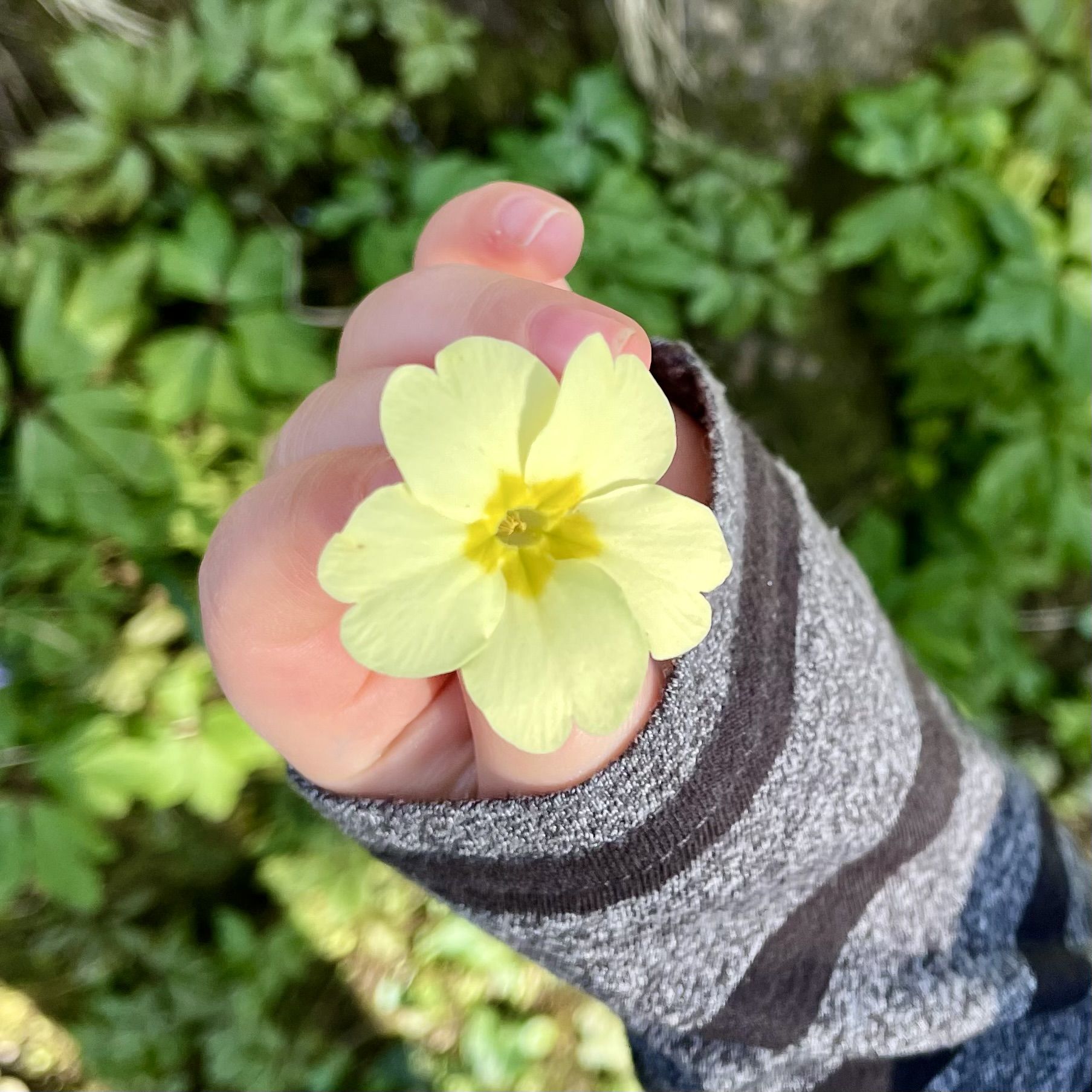BY ANN HAIGH
RECENTLY, on a cold, dark and damp day we decided to brave the elements and take a stroll through Myross Woods. It was muddy, and everything was wet and dripping from the moisture that hung heavily in the air. It felt like we were far from seeing bees and butterflies again, or even going out without wellies and raincoats.
However, just when it seemed like winter would never end, nature threw us a lifeline in the form of a bright and beautiful yellow spring flower: the lesser celandine.
There, in the depths of the woods, was that bright yellow sign – a sign that brighter days are ahead.
Ray of hope
The lesser celandine (Ficaria verna) is among the first flowers to bloom in the year, revealing its pretty petals in late winter.
Sporting eight to 12 bright yellow shiny petals, it can be spotted in woods, by rivers and in banks and ditches, typically from February onwards. It is a known sign that winter is nearing its end. Belonging to the family Ranunculaceae (buttercups), the lesser celandine is easily distinguished by the heart shape of its dark green leaves.
This jaunty flower not only looks good, it is also remarkably adapted. Flowering so early in the year poses risks, given the cold and potential for frost.
However, the lesser celandine minimises this risk by responding to the onset of darkness, or overcast conditions, by closing its petals. This reduces the chances of the flower freezing and safeguards its pollen’s viability.
Studies have also shown that closing petals at night reduces the risk of being eaten by grazing predators such as slugs and even deer. This clever phenomenon is called nyctinasty, which is certainly a great word to impress people with.
Spring flowers
Other early bloomers to watch for are primroses, alexanders, coltsfoot, marsh marigolds, and wood anemones.
For identifying of Irish wildflowers, The Wildflowers of Ireland- A Field Guide by Zoë Devlin is a great go-to resource. It is a handy size and easy to carry on walks while searching for those first floral signs of spring.
Primroses are among my favourites, being easily recognisable and delicately scented. The flower’s name derives from Latin, with ‘prima’ meaning ‘first’ and ‘rosa’ meaning ‘rose,’ reflecting its early appearance in spring. A lesser-known fact about primroses is that if you look very closely, you will notice they have two different types of flowers, known as ‘pin’ and ‘thrum.’
 Having a closer look at the primrose. The centre here makes it a ‘thrum’ flower as the anthers are visible at the top of the tube.
Having a closer look at the primrose. The centre here makes it a ‘thrum’ flower as the anthers are visible at the top of the tube.
Each individual primrose plant exclusively bears one type and the subtle difference lies in the very centre of the flower. Thrum flowers feature the pollen-bearing anthers (male part) at the top and the pollen-receiving stigma (female part) at the bottom, whereas pin flowers have the anthers hidden down the tube, with the stigma at the top.
The purpose of having this opposite arrangement is to prevent self-fertilisation and encourage cross-fertilisation. When insects like bumblebees visit a thrum flower, the pollen sticks to the base of their tongue as they dip down the tube for nectar.
Upon moving to a pin flower, the pollen aligns perfectly to fertilise the stigma at the flower’s top. A complex process, but fun to look closely at primrose plants to see if you can spot the difference.
Daffodils and snowdrops, while not native, are also early bloomers that add to the joy and further herald the start of longer and brighter days.
Tell-tale trees
Trees also give us clues that the season is about to change. Blackthorn typically starts to adorn our hedgerows with white blossoms in March. However, for the past four years a monitoring project conducted by the National Biodiversity Data Centre, the farmer’s wildlife calendar, has documented the first sightings of blackthorn in flower occurring in February. So, be sure to keep your eyes open.
 The bright red female flower of the hazel tree.
The bright red female flower of the hazel tree.
During our walk in Myross, in addition to spotting the lesser celandines, we also noticed the tiny bright red female flowers of the hazel tree, along with dangling catkins, which are the male flowers. The flowering of the hazel tree serves as another unmistakable sign of our progression through the seasons.
New Year Plant
Hunt Interestingly, despite the surge of interest in spotting spring flowers, native Irish wildflowers can be found blooming all year round, with some even flowering in the depths of winter.
For the past three years, we’ve participated in the Botanical Society of Britain & Ireland’s annual New Year Plant Hunt, a citizen science survey aimed at finding and recording plants in flower between December 30th and January 2nd.
This year’s results revealed that a total of 629 wildflowers were in bloom across Britain and Ireland, with only 303 being native. We only spotted 25 species in bloom ourselves, and these included the top two most commonly reported in the survey; the daisy and the dandelion.
It is surprising to think about native wildflowers blooming just after Christmas, but once you start looking, you realise they are more common than you might think. The survey aims to deepen our understanding of how wild and naturalised plants are responding to climate change. In summary, there is never a bad time to venture out and enjoy wildflowers in bloom.
However, if I had to choose, this time of year is the most exciting. There is nothing quite like spotting those floral ‘firsts’ and knowing that spring is just around the corner.








